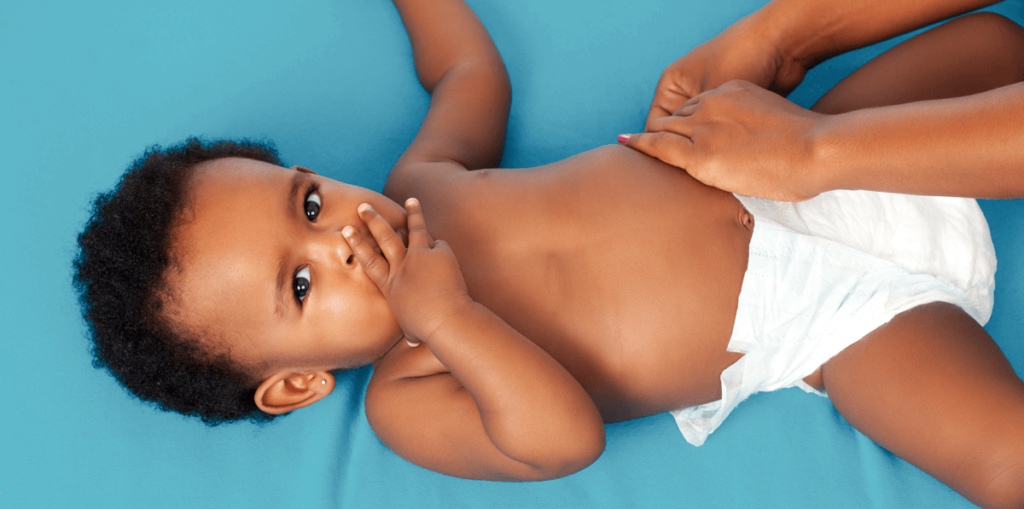Diaper rash is one of the most common skin issues that babies experience, especially during the first two years of life. It can be uncomfortable for your little one, but with the right care, it’s manageable and usually heals quickly. Here’s everything parents need to know about preventing, treating, and managing diaper rash.

What is Diaper Rash?
Diaper rash refers to the irritation or inflammation of the skin in the diaper area, which is caused by a combination of moisture, friction, and contact with urine or stool. The condition can range from mild redness to more severe rashes with sores and infection.
Common Causes of Diaper Rash
Understanding what leads to diaper rash can help parents take preventive measures. Some common causes include:
- Prolonged Exposure to Moisture: Wet diapers left on for too long can irritate your baby’s delicate skin.
- Chafing and Rubbing: Tight or ill-fitting diapers can cause friction that leads to skin irritation.
- Sensitive Skin: Babies with more sensitive skin are prone to developing rashes.
- New Foods: Introducing solid foods can change the composition of a baby’s stool, increasing the likelihood of diaper rash.
- Antibiotic Use: Antibiotics, either taken by the baby or the breastfeeding mother, can disrupt the natural balance of bacteria, leading to diarrhea and a higher risk of diaper rash.
- Yeast Infection: The warm, moist environment inside a diaper creates a perfect breeding ground for yeast, particularly if the baby has recently taken antibiotics.
How to Prevent Diaper Rash
Preventing diaper rash can save your baby a lot of discomfort. Here are some tips:
- Frequent Diaper Changes:
- Change diapers often to keep the area dry and clean. Even if the diaper feels slightly wet, it’s better to change it.
- Check your baby’s diaper every two hours and immediately after bowel movements.
- Allow Diaper-Free Time:
- Giving your baby some diaper-free time each day allows air to circulate and helps keep the skin dry.
- Lay your baby on a towel or a waterproof mat and let them play for a few minutes without a diaper.
- Use the Right Diapers:
- Choose diapers that fit well but aren’t too tight. Opt for super-absorbent diapers to reduce moisture.
- Consider switching brands if your baby develops frequent rashes, as some babies may have sensitivities to certain materials or chemicals in diapers.
- Use Barrier Creams:
- Apply a thick layer of barrier cream or ointment (such as zinc oxide or petroleum jelly) during each diaper change. These creams create a protective layer on the baby’s skin, preventing irritation from moisture.
- Avoid Fragrance and Alcohol-Based Products:
- Use fragrance-free, hypoallergenic wipes or simply use warm water and a soft cloth to clean the diaper area. Avoid wipes with alcohol or harsh chemicals that may irritate the skin.
Treating Diaper Rash
If your baby develops a diaper rash, there are several steps you can take to treat it and soothe their discomfort:
- Keep the Area Clean and Dry:
- Clean the diaper area gently with warm water or a mild, unscented cleanser. Pat the skin dry with a soft towel—avoid rubbing, which can aggravate the rash.
- Give your baby as much diaper-free time as possible to allow the skin to breathe.
- Apply Diaper Rash Creams:
- Use a thick, protective diaper cream or ointment that contains zinc oxide. This forms a barrier against moisture and helps soothe inflamed skin.
- Reapply the cream during each diaper change until the rash improves.
- Use Mild Products:
- Avoid scented lotions, powders, or wipes that can further irritate your baby’s sensitive skin. Stick to fragrance-free products until the rash subsides.
- Consider Diaper Type:
- If you’re using cloth diapers, ensure they are washed with gentle, fragrance-free detergent. If using disposable diapers, switch to super-absorbent, breathable types to help keep the area dry.
- Oatmeal Baths:
- For babies with severe rashes, a lukewarm oatmeal bath can help soothe irritation and inflammation. Make sure to pat the skin dry afterward.
When to Call a Doctor
While most diaper rashes improve with home care, there are instances when you should consult your pediatrician:
- Severe Rash: If the rash becomes very red, swollen, or has open sores.
- Blisters or Pus: These could indicate a bacterial or yeast infection that requires medical treatment.
- Fever: If your baby develops a fever alongside the rash, it may signal a more serious infection.
- Persistent Rash: If the rash doesn’t improve after 3-4 days of treatment, it may be due to an underlying infection, allergy, or other condition that needs professional care.
Diaper Rash and Yeast Infections
Diaper rashes caused by yeast (fungal) infections are common, particularly after antibiotic use or in warm, humid conditions. These rashes tend to be bright red, have raised borders, and may include small red spots outside the main rash area. They can be more challenging to treat and usually require antifungal creams prescribed by a doctor.
Conclusion
Diaper rash is an inevitable part of parenting, but with the right preventive measures and treatment, you can minimize its occurrence and discomfort. Always keep your baby’s diaper area clean, dry, and protected, and act quickly at the first sign of irritation. By doing so, you can help ensure your baby remains happy and rash-free. If you’re ever in doubt about the severity of a rash, don’t hesitate to contact your pediatrician for advice.
